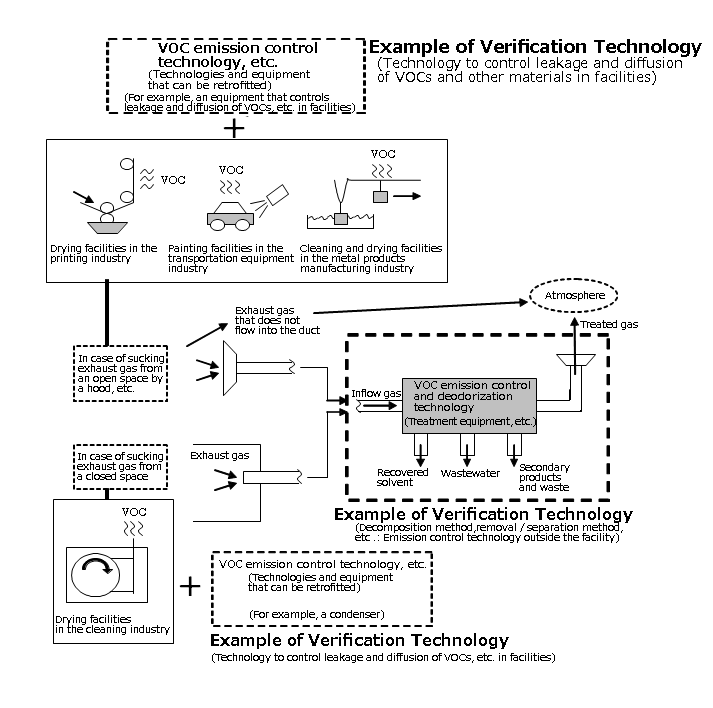
Click here to search for Verified technologies
In the field of VOC emission control technology and deodorization technology (VOC emission control technology and deodorization technology for small and medium-sized businesses), “VOC (volatile organic compound) emission control technology” and “deodorization technology” are targeted. VOC emission control technology and deodorization technology are facilities owned by small and medium businesses such as painting, printing, industrial cleaning, cleaning, etc. (facility where voluntary efforts regarding VOC emission control are expected by the Air Pollution Control Act) We are demonstrating technologies for properly processing VOCs and odorous substances discharged from the plant (equipment, plant, etc.), technologies for suppressing VOC emissions by improving the facility structure, and technologies for deodorizing. The emission control technology and deodorization technology mentioned here includes not only processing close to the total amount, but also partial processing (by bypass processing, etc.) and local processing, emission control, and deodorization by improving the facility structure. In particular, it is intended for low-cost, compact, easy-to-maintain technologies that can be used commercially. In addition to the processing technology mainly aimed at reducing emissions outside the facility and deodorizing, technologies and equipment that suppress leakage and diffusion inside the facility during each work process are also assumed. For example, technology to recover solvent by dehydrating, distilling, or refining waste.

[VOC emission control technology and deodorization technology field (VOC emission control technology and deodorization technology for small and medium-sized businesses)]
- VOC (abbreviation of volatile organic compounds) is a general term for organic compounds that easily evaporate and become gases in the atmosphere, and is one of the causative substances of suspended particulate matter and photochemical smog. There are approximately 200 types of VOCs such as toluene, xylene, and ethyl acetate contained in paints as solvents, and they are discharged in various fields such as industrial cleaning, printing, adhesion, and chemical industries.
- In recent years, “Photochemical smog” has been increasing, so the Air Pollution Control Law was amended and VOC emission regulations were started in 2006. In this amendment, the total amount of VOC emissions from fixed sources such as factories by FY2010 will be reduced by the combination of the regulation of specific fields by law and the voluntary efforts of other companies (best mix). The target is to reduce by about 30% compared to FY2000.
- Emissions control is progressing at large enterprises due to closure of facilities, etc., but at small and medium-sized enterprises, measures are delayed from the aspect of operation and cost, and small and medium-sized businesses close to the living environment mainly in urban areas As odor complaints from business establishments increase and the sources of odors that cause complaints tend to diversify, measures to reduce VOCs emitted from small and medium-sized factories and business establishments Further implementation is required. In recent years, processing equipment using VOC processing technology has been developed and put into practical use. In particular, commercialization of small processing equipment that can be introduced in small and medium-sized factories and business establishments is also progressing. The current situation is that the market has been delayed.

